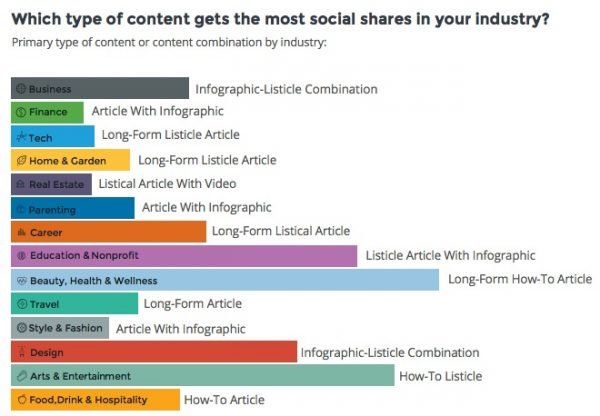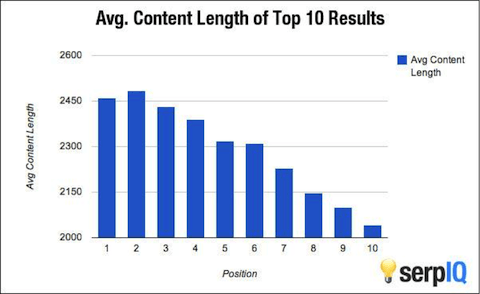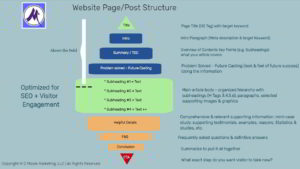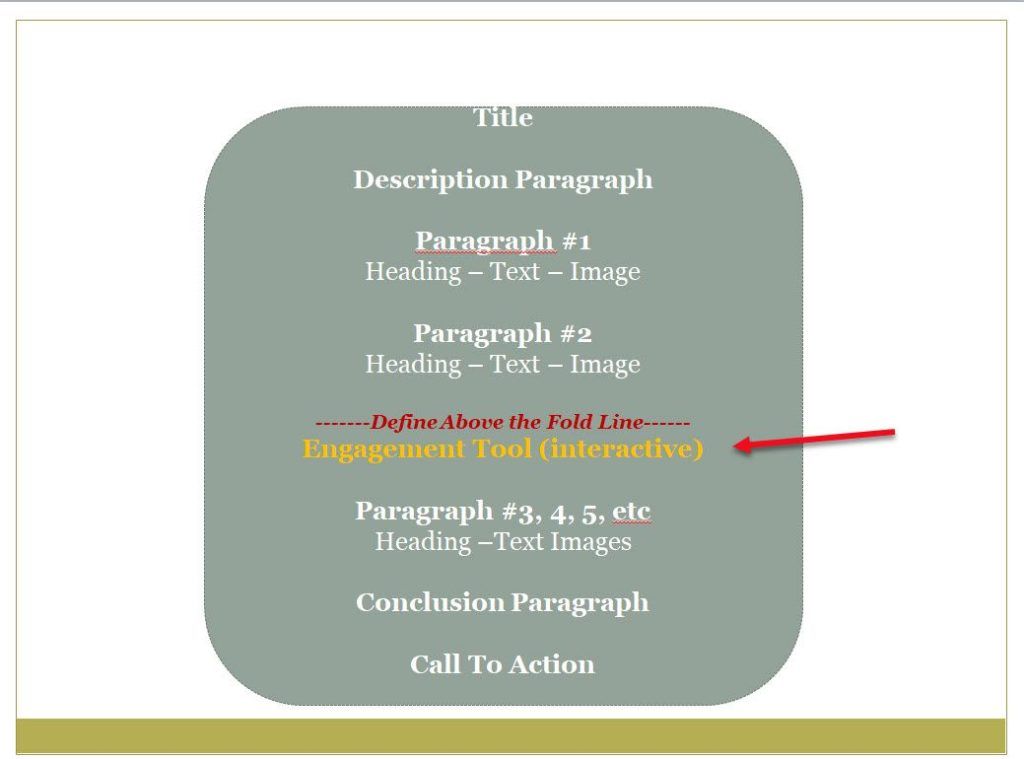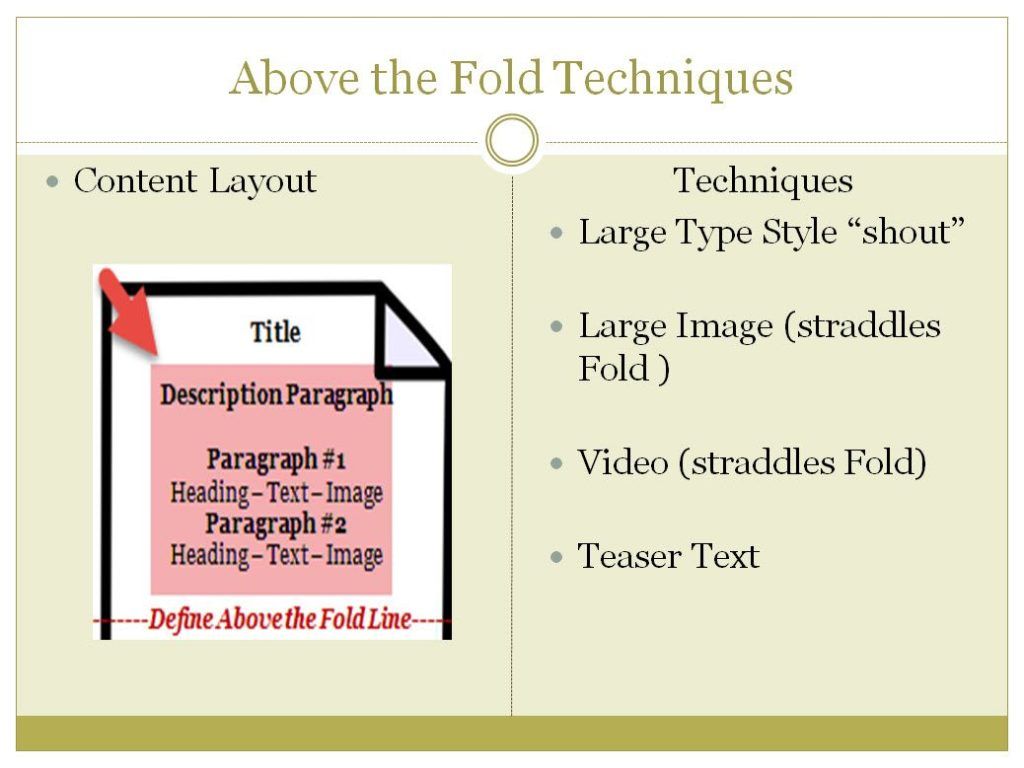Content Marketing Guide for Local Business
In today’s online digital marketing world the customers for most local companies spend time online. Whether it is the efforts ideal customers make to search for information or their active use of social media they are online. As a local business, you can not afford to miss content marketing opportunities to be where your customers spend time. In this article, you will learn specifically how content marketing helps local companies and what are the key elements to utilize.
In this Guide, you will learn about the importance of Content Marketing for local businesses. It will encompass comprehensive topics, strategies, and techniques for local business content marketing,
We will discuss:
information about website Content Marketing and how local companies can use it to build their brand, attract traffic, learn about the various strategies and techniques, and optimize for SEO.
- What content marketing is all about
- Relevance to Social Media & types of campaign
- Content Development Steps
- Importance of website Blog content length
- How Keywords and phrases improve Search Engine Optimization (SEO)
- Content Publishing Frequency
- A template for Page Content
- Key elements for Local content marketing
- A 10-Step Procedure
What is Content Marketing?
Definition and Importance of Content to Local Marketing
Content marketing involves creating and sharing valuable, relevant, and consistent content to attract and engage a clearly defined audience. The ultimate goal is to drive profitable customer action. Unlike traditional advertising, which often interrupts consumers, content marketing seeks to provide valuable information that customers are already seeking.
Learn How Wikipedia Describes Content Marketing
Wikipedia defines “content technique” for marketing as…
Content marketing is a form of marketing focused on creating, publishing and distributing content for a targeted audience online. It is often used by businesses in order to:
- Attract attention and generate leads
- Expand their customer base
- Generate or Increase online sales
- Increase brand awareness or credibility
- Engage an online community of users
Content marketing remains a crucial strategy for local businesses looking to establish their online presence and attract customers. As of 2025, businesses with optimized local profiles are 138% more likely to achieve top rankings, higher star ratings, and greater engagement rates. This guide will help you understand the importance of content marketing for your local business and how to optimize your efforts for maximum impact.
Local Content Marketing means attracting and transforming prospects into customers by creating and sharing valuable free content. The purpose of content marketing is to help the company to create sustainable brand loyalty and provide valuable information to consumers, as well as create willingness to purchase products from the company in the future. This relatively new form of marketing usually does not involve direct sales. Instead, it builds trust and rapport with the audience.
Why is Content Marketing Important for Local Businesses?
- Builds brand awareness and trust
- Improves search engine rankings
- Generates leads and conversions
- Establishes your business as a local authority
- Enhances customer engagement and loyalty
Recent studies show that a strong local presence across search, social, and reputation management platforms is expected to be crucial for brand success by 2025.
With this understanding of the basic tenets, let’s look next at why creating articles and other Blog types makes such a difference to local company online marketing success including techniques for local SEO-type content. Here are 4 basic reasons;
- Content that is SEO optimized helps to get the website ranked higher in the SERPs. The higher the Ranking the more organic (free) traffic
- Quality content builds local business brand awareness and establishes the owner’s authority
- Content focused on customer needs and issues will add subscribers, and followers and promote sharing
- Content is used to discuss an opportunity or issue and then linked to product or service offers
What do the marketing statistics tell the local small and mid-size businesses about the importance of Content Marketing?
Benefits of Content Marketing for Local Companies
Increased Local Visibility
By producing content that resonates with the local community, businesses can improve their visibility in local search results and on social media platforms. This increased visibility can lead to more foot traffic and higher sales.
Building Trust and Community
Content marketing allows businesses to build trust with their audience by consistently providing valuable information. It also fosters a sense of community, as businesses engage with local events, issues, and interests.
Cost-Effective Marketing
Compared to traditional advertising methods, content marketing can be more cost-effective. It requires time and effort but often does not involve significant financial investment, making it accessible for small businesses with limited budgets.
Developing a Content Marketing Strategy
Identifying Your Target Audience
The first step in any content marketing strategy is to identify your target audience. For local businesses, this means understanding the demographics, interests, and needs of the local community.
Setting Clear Objectives
What do you hope to achieve with your content marketing efforts? Whether it’s increasing brand awareness, driving more traffic to your website, or generating leads, having clear objectives will guide your strategy.
Creating a Content Plan
A content plan outlines the types of content you will create, the topics you will cover, and the platforms you will use. It should also include a content calendar to ensure consistent posting.
Content Relevance to Social Media Marketing
Quality content is as important to social media promotion and for business websites. There are any number of content types and certain content is more suitable than others for different industries. This chart from Convince & Convert gives you a solid overview of this point.
How does social media play into small business content marketing?
Social media plays a pivotal role in small business content marketing by providing a platform to reach and engage with a broad audience at a relatively low cost.
Here are some key ways social media integrates into small business content marketing:
1. Amplifying Content Reach
Social media allows small businesses to share their content with a wider audience. By posting blog articles, videos, infographics, and other types of content on platforms like Facebook, Instagram, Twitter, and LinkedIn, businesses can significantly increase their reach beyond their immediate followers.
2. Engaging with the Audience
Social media offers direct interaction with customers and potential clients. Businesses can engage in real-time conversations, respond to comments and messages, and gather feedback. This interaction helps build a loyal community and strengthens customer relationships.
3. Driving Traffic to the Website
By including links to their website in social media posts, businesses can drive traffic to their site. This not only increases visibility but can also lead to higher conversion rates as more people visit the website and learn about the products or services offered.
4. Showcasing Brand Personality
Social media provides an opportunity for businesses to showcase their brand personality. Through posts, stories, and live sessions, companies can humanize their brand, share their values, and create a more personal connection with their audience.
5. Cost-Effective Marketing
Compared to traditional advertising, social media marketing is often more cost-effective. Many social media platforms offer free accounts and various advertising options that can be tailored to fit any budget, making it accessible for small businesses with limited marketing funds.
6. Utilizing User-Generated Content
Encouraging customers to share their experiences and tag the business in their posts generates user-generated content (UGC). UGC acts as free promotion and provides authentic testimonials that can influence potential customers.
7. Leveraging Targeted Advertising
Social media platforms offer sophisticated targeting options for paid advertisements. Small businesses can reach specific demographics, interests, and geographic locations, ensuring that their content is seen by the most relevant audience.
8. Analyzing Performance
Most social media platforms come with built-in analytics tools that allow businesses to track the performance of their content. These insights help businesses understand what type of content resonates with their audience, enabling them to refine their strategy for better results.
9. Staying Top of Mind
Regularly posting on social media keeps the business top of mind for followers. This consistent presence helps ensure that when customers need a product or service, they think of the business that they frequently see in their feed.
10. Supporting Local Community
For local businesses, social media can be a great way to connect with the community. Sharing local news, participating in community events, and supporting local causes can enhance the business’s reputation and foster community loyalty.
4 categories of content for winning social media campaigns
“To create effective content on social media you must, first of all, understand the four categories of content you can create for social media.
- Educational content—Educational social media content is designed to inform and educate your audience about your brand, product, or services.
- Entertaining content—Entertaining content, as the name suggests, is meant to be light-hearted and fun. Its main purpose is to drive engagement.
- Inspirational content—We all need a shot of inspiration
- Conversion-focused content—Conversion-focused content is designed to directly drive one of your business goals like lead generation or driving sales.”
- [Source: Agility PR Solutions]
Source: Convince & Convert / by Jay Baer
As you can see, this chart indicates the importance of exploring the various “types of” Blog content as part of your marketing research and plan.
What do consumers have to say about Content Marketing?
- “70% of people would rather learn about a company through blog posts rather than advertisements” (Source: Content Marketing Institute).
- 81% of U.S. online consumers trust information and advice from blogs
- “Companies that consistently blog generate 67% more leads per month than those that don’t.” (Source: Demand Metric)
(Source: http://writtent.com/blog/top-blogging-statistics-45-reasons-to-blog/
6 Basic Content Development Steps
1. The first step as part of a complete local business digital marketing plan is to establish a content plan and editorial calendar. This step outlines what type of content will best serve the target customers and a list of the most important general topics to be covered. This is developed from the business owner’s knowledge of what questions, concerns, issues and opportunities are most important to their target customers.
2. The editorial calendar will lay out a daily, weekly, and monthly schedule as to how much content needs to be created and when it will be published. This Editorial Calendar includes both business website articles and social media postings.
3. A content research process is established to quickly and effectively develop ideas, resources, curated content from industry experts and trends and topics
4. Content topic ideas are listed and integrated into the Editorial calendar. This sets out a timetable for when to complete topic research and begin drafting the content.
5. Using Blog-type templates, readily available online for the various types of content, a draft of each article is begun. The first step is to list the topic, purpose, and outline of key points to be covered. Next, the author writes out their ideas, thoughts, and opinions on each key point. This is followed by adding relevant excerpts from the websites of identified (non-competitor) authorities on the topic being covered. Proper attribution should be included for any direct quotes or curation of sections of relevant supporting content. As a general rule of thumb, 60 – 70+% of any website article should be the writer’s unique content.
6. Once the first draft is completed, edits are made, headings added, images directly reflecting the intent and purpose are selected and a revised draft is created.
Importance of Website Content-Length
Using quality and targeted content to attract visitors and increase website article ranking is directly affected by the length of articles. Search engines disdain short articles as not having value or not really covering the topic. We recommend to our clients that when creating long-form articles, they strive to be at least 2,000 words in length.
According to Copy Press.com, “2416 Words: The Average Word Count of Top Ranked Searches”
Go ahead, tell your writers [or small business clients] that 500 words aren’t enough and you want them to crank out 2,000 word blog posts from now on!.
Longer articles are typically well-researched with plenty of data to back them up. They serve as credible sources to journalists and bloggers that link back to the article as a source. Learn more >Here
The following, from SerpIQ, has been often quoted by industry experts to highlight the importance of blog article length…
Our belief at M4 Digital Marketing is that this data does not tell the whole story of website content length. In a study if you ask website visitors about their preference for website article length, “over 50% prefer 700 – 1500 words length.”
Our take is that “cornerstone articles”, important business website articles should be over 2,000 words in length but supplemental articles, particularly those related to or expanding on the cornerstone articles can be in that 700 – 1500 word range. It is the dilemma of satisfying the target visitor, which is the most important objective, and satisfying the ranking in the search engines…as in competition with other articles for a given search query.
Website Content & Keywords
Each article’s topic should be focused on keywords and phrases already identified in support of the local business purpose. The keyword research, part of creating the digital marketing plan, will identify the 5 – 8 most relevant Keywords people include in a search for a given product or service.
These keywords should have enough search volume ( at least 500+ searches per month) and as low a competition as possible. When these 5 – 8 defining Keywords reflect when taken together define the business for the search engines. This is an SEO element critical to ranking articles and blog posts.
In addition to the 5 – 8 primary Keywords, each of those needs to have 15+ long-tail keywords reflective of each primary keyword. These are keyword phrases of 3 or more words that are more descriptive of how people search.
For example, a “primary keyword for a business might be “residential air conditioners” but people searching my enter “home air conditioners under $1,000”
These long-tail keywords are also critically important as a result of the growing impact of “voice search”. Today, more and more people are using voice search where they verbally ask for search results on their mobile phones or in the new home search tools like Amazon Echo, Google Home and others.
People do not speak like they type. When someone searches online by typing their search query on a computer or table. The search term tends to be very direct. An example would be “pizza near me” . But when someone uses voice search, the search query is longer and more specific e.g., pizza near me with delivery.”
Learn more on Keyword Research
Frequency of Website Article Publishing
Probably the most telling recommendation for business website article content publishing is how frequently to produce content.
A recent study from HubSpot shows that B2B companies that publish 16-plus blog posts per month receive 3.5 times the amount of traffic as companies that publish only 0-4 posts per month. The story is similar for B2C companies: those that post 16-plus entries a month enjoy 4.5 times the amount of traffic as those that upload only 0-4 posts..
In our experience, this is a major concern for most local companies and puts off many as not being able to conceive of creating and publishing 11 – 16 articles a month. That is why our take on this question of publishing frequency is different. We believe that all of these monthly articles do not have to be 2,000+ word long-form content. If a local business can create one solid cornerstone article a week, that article can be re-purposed into other blog types, such as Infographics, Slide Decks, and shorter-form posts. In this manner, one article is turned into 3 -4 making 11 – 16 a month very doable.
Website Blog Article Types
With the question of frequency of monthly article publishing in mind, it is instructive to describe the most effective Blog post Types. The following Blog Types are ideally suited to the small and mid-size local companies striving to create valuable visitor content and satisfy the search engines as to ranking.
- List Posts -creating a list post (whether with bullet points or numbered) gets high marks for time on site, bounce rate, and shareability. This is likely because of the ease of reading as people tend to scan text. The fact that lists can have “headings” allows your content to create interest and engagement with the text.
- How To Posts – One key objective for building your “brand” through content marketing is to establish your organization and experts in your field and authorities on the article topics presented. A well-developed how-to-article “walks the reader” through a set of specific steps in solving a problem or utilizing a tool or procedure. A Title example could be “How to Manage A Business Budget for Greater Profits.”
- Question & Answer Post –This post type is ideally suited to building your brand’s authority by engaging an established “Influencer” in a Q&A discussion. Once you have identified and established a networking relationship with an authority of influence within your market niche, you can reach out to them and request to include their views in a new blog post article.
- Personal Success Stories – To the extent your business and customer base are likely to have produced successes as a result of your products or services, research shows that people in the same market have positive views of success stories. Describing the details of a customer’s success with your products or services so readers can follow the before and after steps in the process with a tangible outcome is the right approach.
- New Service or Product Announcement –The products or services you have developed and promoted will be a valuable topic theme for a blog post article. This is of particular value when you are writing about an upcoming launch. This will be easy to develop because of your knowledge about the features or benefits of the new product or service, what problem or opportunity is being targeted, and what went into the development and decision to bring the product/service to market.
- Target Market News or Important Trends – When there is important news or major trends uncovered in your industry that are of real interest to your target market niche, there is already buzz and news momentum in the topic area. Here are areas to look for or consider for this type of article:
- Breaking News Affecting Your Market
- Events, Conferences, TV special coverage
- Changes in legal or regulatory aspects affecting your market
- News surrounding Top people or companies in your industry
The Standard Template for Website Article Content
The last part of our guide on local business content marketing is to look at a standard template model that highlights basic “page SEO needed for website content. This website Page and Post content structure chart has been updated based on 2020 research into content length for local SEO.
Defining the terms for On-page SEO
Looking at the chart above, we define the terms as follows:
- TITLE represents the blog post of page Title that will show at the top of every page and be included in the URL for that page. The title should be no more than 160 characters and contain the target keyword or phrase early in the title.
- Each paragraph may contain a heading, text, and images (if appropriate. The page content should be organized into “key points” with a heading for each cohesive section. The section HEADINGS, called H3 tags, need to contain at least one related keyword to the overall topic and the content purpose for each section.
TITLE: 10 Ways to Use Yoga for Weight Loss
META DESCRIPTION: Yoga for weight loss methods that work. You can use Yoga effectively to shed those extra pounds. Here are 10 tips on using proven Yoga techniques to assist your weight loss efforts.
DESCRIPTION PARAGRAPH
The first paragraph, called the Meta description for SEO purposes, provides a preview of what the blog post is about in a way that both:
Further defines the topic clearly for the search engines
Grabs the interest and attention of the visitor and previews that their search will be answered by your content
If a section has sub-topic paragraphs, important sub-topics can have their own related Heading, referred to as H3, 4 5 or 6 Tags, depending on how many sub-sections the content may be divided into.
After all the text paragraphs and sections for the topic are completed, the next step is to create a “Concluding Paragraph” that summarizes and wraps the article up.
The last paragraph is a Call-To-Action (CTA) that specifically directs the reader as to what you want them to do next. An example might be a Link to another page or post on your website related to this article with link text such as “Read More about (topic) here”
Meta Descriptions
The term “Meta” is an SEO term that refers to the primary means by which the search engines come to understand what your article content is about. It is your chance to tell them “This is what this content is about.”
The Page Title is the “Metal Title” and the very first paragraph is intended as the “Meta Description.” Your target Keyword for the article should be used once in the Meta Description as early in the first sentence as possible.
Content Engagement Techniques
The last important aspect of the basic content template is to understand the concept of “above & below the fold”. Our job is to create as unique, purposeful, and interesting content as possible to keep the reader engaged and review all your articles.
People have very short attention spans. Not only must we grab their attention early but keep it as they read, or more likely scan, the page to find what interests them or answers their search query purpose.
The techniques of engagement are many but none more important than at the above and below the fold position.
The “fold” is that point on the screen being used to view your content, such as a computer or tablet size screen (mobile screens and content are a separate subject), where the person viewing the content would have to SCROLL down to see more.
This natural point of the scroll is the most likely place to lose the viewer’s engagement. It is therefore critical to use some of the engagement techniques commonly effective is motivating the viewer to scroll down.
Here are several valuable and simple “engagement techniques”:
Larger Type and Color technique placed right above the natural Fold>
(place in large type” Read the exciting steps below”
Relevant Image, that supports your article purpose, that straddles the “FOLD” causing the reader to scroll on to see the complete image (note that in this article you are reading, we have positioned an image on the fold).
A short Video can be used in the same way as the image. You can select a relevant video from YouTube and place it on the fold.
Teaser text is the last sentence of the paragraph right above the fold.
Key Elements for Local Business Content Marketing
What are the key elements of a successful content marketing strategy for local businesses
Here are the key elements of a successful content marketing strategy for local businesses, based on the latest insights:
1. Clear Goals and Objectives
- Define specific, measurable, achievable, relevant, and time-bound (SMART) goals for your content marketing efforts. For example:
- Increase local brand awareness.
- Drive foot traffic to a physical store.
- Generate leads or improve customer retention.
- Align goals with your business priorities, such as launching a new product or improving search rankings.
2. Understanding the Target Audience
- Develop detailed buyer personas that include demographic and psychographic information (e.g., age, location, interests, pain points).
- Focus on local audience needs by addressing topics relevant to their area or community (e.g., “Best Local Events This Month”).
- Use tools like Google Analytics and social media insights to refine your understanding of customer behavior.
3. User-Intent Keywords and Local SEO
- Research keywords that reflect user intent, particularly those with local relevance (e.g., “best coffee shop in [city]”).
- Optimize content for search engines by incorporating these keywords naturally into titles, meta descriptions, and body text.
- Leverage Google My Business to enhance local visibility.
4. High-Quality Content Creation
- Create valuable, engaging, and user-oriented content that addresses customer needs at various stages of their journey:
- Awareness Stage: Blog posts or videos explaining common problems.
- Consideration Stage: Case studies or comparison guides.
- Decision Stage: Testimonials or special offers.
- Include diverse formats like blog posts, videos, infographics, newsletters, and social media updates to appeal to different preferences.
5. Branding and Consistency
- Ensure all content aligns with your brand identity, including tone of voice, visuals, and messaging.
- Maintain consistency across platforms to build trust and recognition among local customers.
6. Community-Centric Content
- Highlight local events, news, or points of interest to connect with your audience on a personal level.
- Address specific pain points experienced by your community (e.g., “How to Prepare for Winter in [City]”).
7. Content Distribution Strategy
- Share content across the platforms most frequented by your audience (e.g., Facebook for community updates or Instagram for visual storytelling).
- Use email newsletters to keep customers informed about new offerings or promotions.
- Experiment with guest blogging or partnerships with other local businesses for cross-promotion[4].
8. Analytics and Performance Tracking
- Monitor key performance indicators (KPIs) such as engagement rates (likes, shares), click-through rates (CTR), and conversions.
- Use tools like Google Analytics to identify what content performs best and refine future strategies accordingly.
By focusing on these elements, local businesses can create a robust content marketing strategy that drives engagement, builds trust within the community, and achieves measurable business results.
This is some basic, sample markdown.
Source: Rika Marty / Content Writer (1)
https://business.yelp.com/resources/articles/content-marketing-small-biz/?domain=local-business
Additional Content Marketing Trends and Best Practices
1. AI in Content Marketing
- Description: Discuss the role of AI in content creation, optimization, and distribution.
- Content Ideas:
- AI-powered writing tools (e.g., Jasper, Copy.ai).
- AI for keyword research and topic generation.
- AI for content personalization.
- Ethical considerations of using AI in content marketing.
- Why it’s important: AI is rapidly changing the content marketing landscape. Local businesses need to understand how to leverage AI to improve efficiency and effectiveness.
2. Video Marketing Trends
- Description: Expand on the importance of video content and highlight current trends.
- Content Ideas:
- Short-form video (TikTok, Instagram Reels).
- Live video (Facebook Live, YouTube Live).
- Interactive video.
- Optimizing videos for local search.
- Why it’s important: Video is highly engaging and effective for reaching local audiences.
3. Voice Search Optimization
- Description: Provide more in-depth guidance on optimizing content for voice search.
- Content Ideas:
- Long-tail keywords and conversational language.
- Structured data markup for voice assistants.
- Claiming and optimizing local business listings.
- Why it’s important: Voice search is increasingly popular, especially among mobile users.
4. Content Personalization for Local Audiences
- Description: Discuss strategies for personalizing content based on location, demographics, and behavior.
- Content Ideas:
- Using location-specific keywords and examples.
- Creating content that addresses local events and interests.
- Segmenting email lists based on location.
- Why it’s important: Personalization can significantly improve engagement and conversion rates.
5. Measuring Content Marketing ROI
- Description: Provide guidance on tracking and measuring the return on investment (ROI) of content marketing efforts.
- Content Ideas:
- Key performance indicators (KPIs) for local content marketing (e.g., website traffic, leads, sales).
- Tools for tracking content performance (e.g., Google Analytics, social media analytics).
- Attribution modeling to understand the impact of content on sales.
- Why it’s important: Demonstrating ROI is crucial for justifying content marketing investments.
SEO Optimization Recommendations
- Keyword Usage: Ensure that the primary keyword “Content Marketing for Local Business” and related long-tail keywords are used naturally throughout the page, including in headings, subheadings, and body text.
- Meta Description: Write a compelling meta description (around 150-160 characters) that includes the primary keyword and summarizes the page’s content. This is what users will see in search results.
- Internal Linking: Link to other relevant pages on the M4 Digital Marketing website, such as case studies, blog posts, or service pages related to content marketing.
- Image Optimization: Use descriptive alt text for all images on the page, including relevant keywords.
- Mobile-Friendliness: Ensure that the page is fully responsive and optimized for mobile devices, as many local searches are performed on mobile.
- Page Speed: Optimize the page for fast loading times, as page speed is a ranking factor.
Content Creation 10-Step Procedure for Local Digital Marketing
Small and mid-size local companies should not be reluctant of in any way put-off by the need to create website content. Using a basic content creation procedure, will in a short time, become almost second nature for a business owner or staff member. We use the same template format with our company’s website and with our clients..
My most important suggestion, based on training and consulting my local business digital marketing clients, is to write as you would say.
Local business website content creation is simply a matter of writing as if you were having a conversation with a customer. This is something a business owner does every day and all day. Have a conversation on your topic in writing!
- Select Category for Specific Campaign
- Choose Categories secondary keyword phrases for the target topic
- Research topics for this Keyword relevant to supporting your article
- Chose over-all topic
- Start 1st Rough Draft
- Title placeholder.
- Outline your thoughts & ideas for this topic (think Personas)
- Research-specific topics outline
- Find authority articles
- .Get any relevant quotes or passages from relevant content (save attribution info)
- Position any curated research in your Draft and add your ideas around curated content
- Add Headings (H2,3,4 etc.) using long-tail keyword phrases
- Draft Conclusion paragraph & CTA (related to the campaign
- Review Draft for final edits & publishing
This wraps up our basic guide to local business content creation. The process is a learned activity. Using templates is an essential help to make this writing of article very easy. We recommend you copy the 10 10-step procedure above to create your template for basic website article creation.
REFERENCES:
(1)
Rika Marty / Content Writer (1)
https://business.yelp.com/resources/articles/content-marketing-small-biz/?domain=local-business
Image: (see in-content source links)
Graphics: Created in Canva
Article Content Development and AI: Refer to Terms & Conditions, Sections 6 & 7

